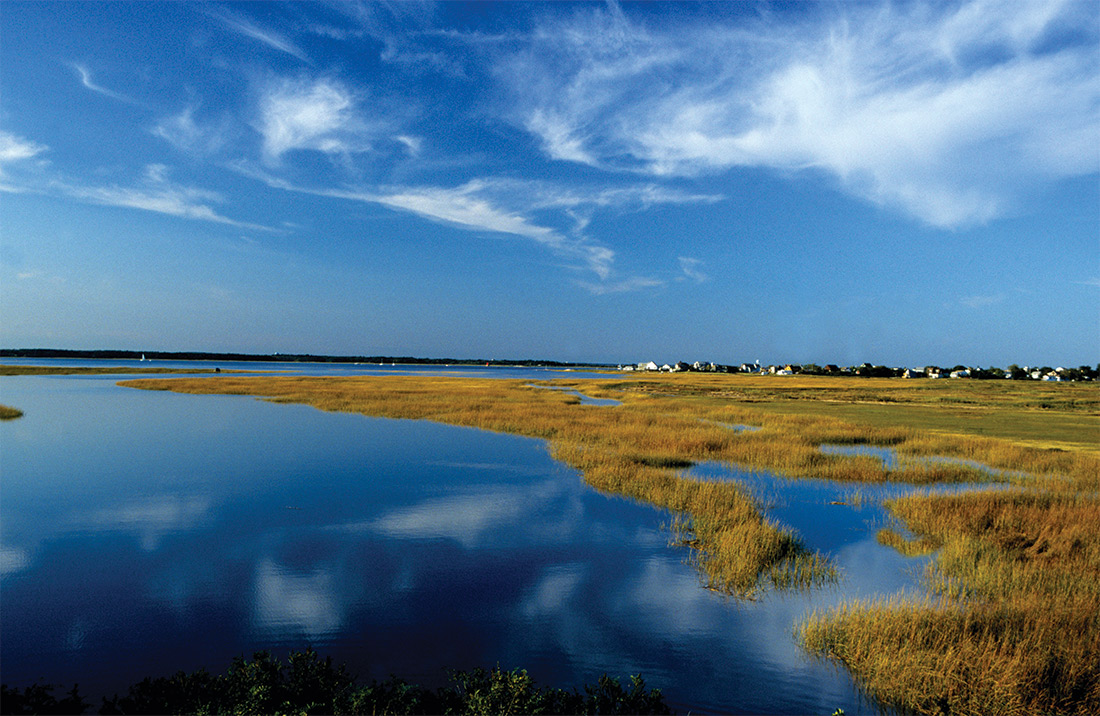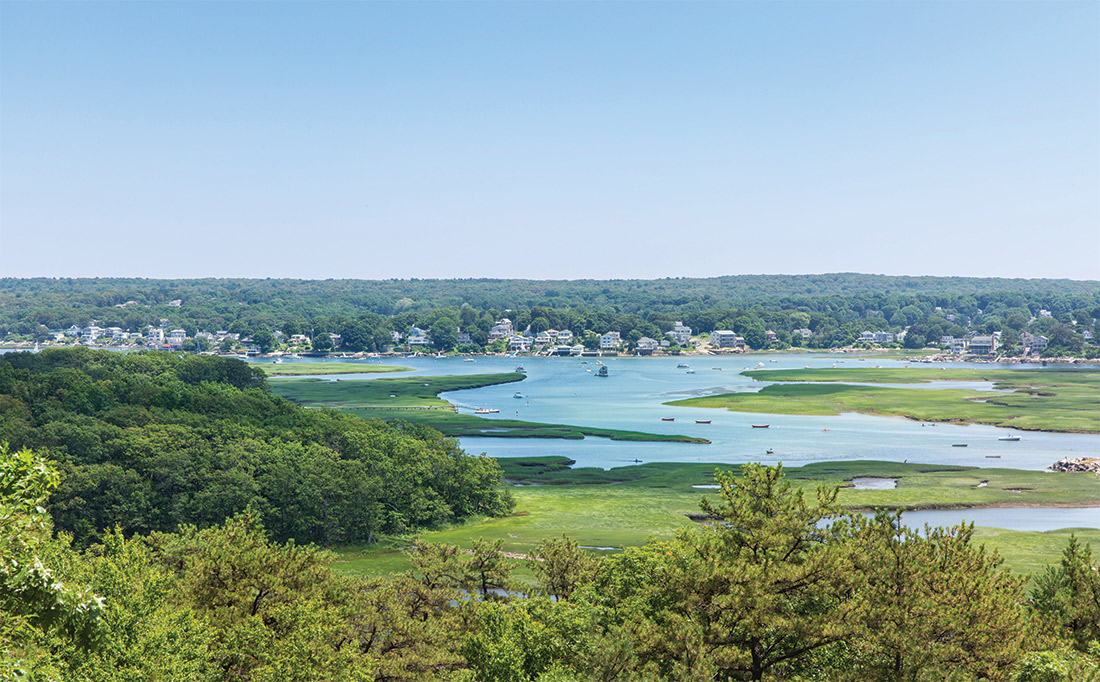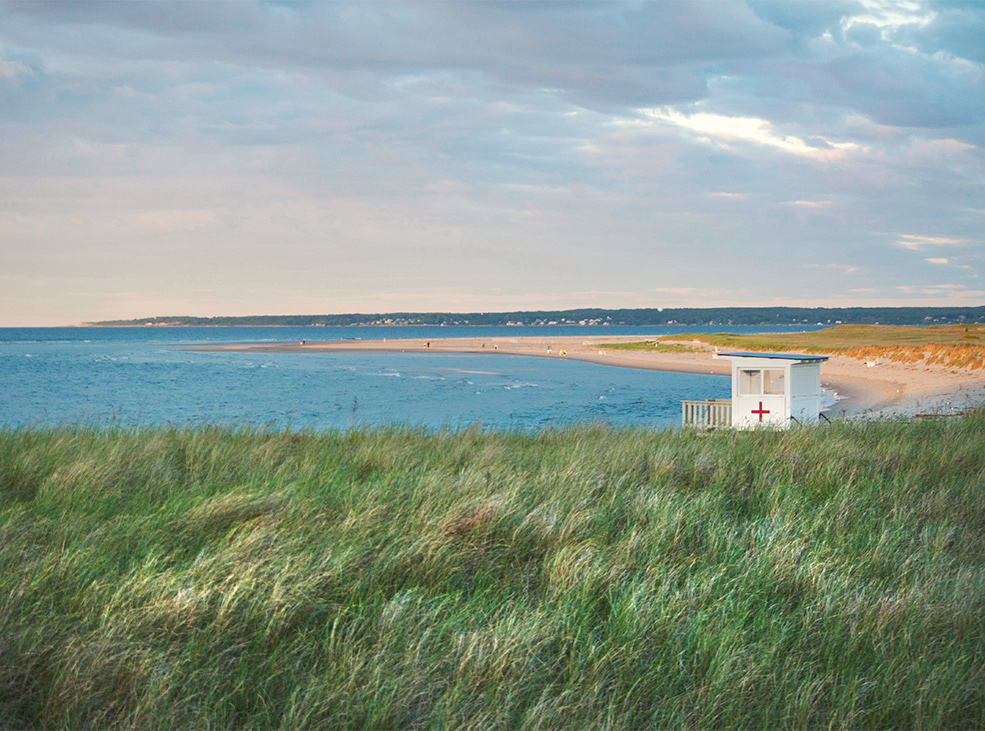Climate change is reshaping the North Shore. At Crane Beach in Ipswich, erosion has swept away land equivalent to 84 football fields since the 1950s. In 2018, a storm destroyed the historic Magnolia Pier in Gloucester. The Great Marsh that embraces the upper edge of the coast is sinking in places from a legacy of ditching and flooding.
“We are starting to witness unprecedented changes,” says Tom O’Shea, program director for Coast & Natural Resources for the Trustees of Reservations, which protects 120 miles of shoreline in Massachusetts.
In the face of these worrisome trends, the Trustees realized our region is at a pivotal moment as we confront the very real dangers climate change presents to our seaside communities. The group decided to investigate the true scope of the problem, focusing on the impacts of sea level rise and storm surge on beaches, salt marshes, developed areas, and wildlife habitats.
The result of the first phase of this work, released in August, is the inaugural State of the Coast report, an assessment of climate change impacts on the 13 coastal towns from Salisbury to Swampscott. The goal is to create a body of knowledge that will highlight the depth of the problem, and galvanize action by local and state government while there is still a chance to make a real difference.

“The effects of climate on sea level rise and storms really takes off after 2050,” O’Shea says. “We have some time to make some smart choices about how we adapt or retreat or protect ourselves.”
The report’s conclusions raise several concerns, including the potential for significant property damage. By 2050, high tides could cover roads daily in 10 of the 13 towns studied. Buildings would also be at risk, with daily tides flooding more than 600 structures. A 10-year storm in 2050—a storm of such severity it is only likely to occur roughly once a decade—could flood nearly one-third of the buildings in Salisbury.
Beyond these more obvious risks, climate change is also likely to have indirect effects on coastal communities. Extensive areas of marshland are expected to sink or flood—more than 40 percent of Gloucester’s marsh, for example, could be flooded by 2050. And low-lying tidal flats are being covered by the sea—in Salem, more than half of these areas could be converted to open water within 30 years.
When marshes and tidal flats disappear, coastal communities lose valuable protection against storm surge and powerful waves. Finding ways to preserve these areas, therefore, could be an important strategy for adapting to climate change.

“We’ve realized that our marshes are a tremendous resource,” says state Senator Bruce Tarr, a Gloucester native whose district includes seven of the communities assessed in the report. “There may be places where, by being good stewards of the marsh and the coastal environment, we can get tremendously cost-effective resiliency.”
Much of the information in the report rings true to the leaders of waterfront towns, who have already been planning for the impacts of climate change and crafting creative solutions. In Swampscott, town leaders are planning to construct a “living reef”—a breakwater designed to create habitats for marine organisms—along its outer harbor to absorb some of the power from incoming waves, protecting boats and shoreline property. The project would also enable the development of shellfish aquaculture within the harbor.
Ipswich’s Argilla Road, the only route to Crane Beach, is already flooded by high tides a few times a month, so the town and the Trustees are collaborating on a plan to elevate the road by three feet.
“I foresee towns doing a lot of this work in the coming years,” says Frank Ventimiglia, operations manager for the town’s public works department.

Gloucester has been assessing its vulnerabilities since at least 2015, says Gregg Cademartori, the city’s planning director. The city has developed plans to build flood barriers at the low-lying wastewater treatment plant and the high school, where a 2018 winter storm flooded the high school parking lot, damaging dozens of cars. Plans to protect other city assets will be worked into all future changes as a matter of course, he says.
“As we upgrade, we ask, ‘What should we be doing differently right now to make that infrastructure more resilient?’” Cademartori says.
It is questions and choices like these that everyone needs to be asking, O’Shea says. Municipal leaders need to be planning for climate change impacts, the state needs to be finding ways to help fund these projects, and everyone needs to be active and engaged in adapting our communities to the changes ahead. Hopefully, he says, the Trustees report will help people realize how essential it is to start acting as soon as possible.
“We have an opportunity to reimagine the coast and how we want it to be for the next generation,” O’Shea says. “People really need to start to raise the level of urgency.”
For more information, visit onthecoast.thetrustees.org.

